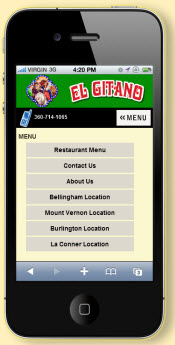
Mashable is reporting that location based social networking company Foursquare is currently testing a new advertising platform intended for small business, by letting large advertisers like Burger King, Gap and Starwood Hotels to test promote themselves with the platform. These listings appear in Foursquare when a customer gets close to a business’ physical location. Small businesses already had the capability to offer discounts when a user checked in to a location, but now Foursquare is providing them with a way to attract geographically close customers by showing an image ad and/or review by a previous Foursquare user.
Why this may be a good idea for Foursquare
Foursquare is a location-based social networking site for mobile devices, such as smartphones. Typically its users “check in” at various venues using a mobile website, text messaging or a device-specific app. Their specific location is available through the GPS in their mobile device. Foursquare has up to now been a means for consumers to promote their favorite bars, hangouts and restaurants. Now, those places will be able to promote themselves directly to consumers. While Foursquare has gathered some 25 million registered users, they made just $2 million dollars last year, according to The Wall Street Journal. They are clearly searching for ways to pump up the earnings.
How the new ads work
The way this works is the ad platform targets Foursquare users determined by their locations and check-in histories. Merchants will and do have a chance to target nearby consumers with particular tastes – a predilection for fine dining, for instance, or customers who had previously checked-in to their store. Merchants in this program have the capability to turn off and on their Foursquare promotions when needed, and are charged similar to a pay per click model, that is, they are going to be charged only on a “per action” basis (when a user actually taps on a promoted listing instead of merely viewing it). So far, Foursquare is charging $0.50 to $3 per action, but that’s likely to change when it is introduced to the masses. Foursquare CRO Steven Rosenblatt said, “Small businesses are willing to pay for local advertising if it makes sense.”




